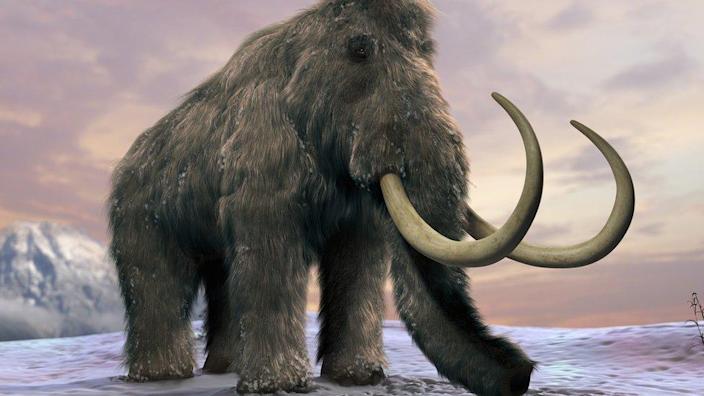Scientists analyzed chemicals in the tusks of the mammoth to calculate how far the mammoth could go in its lifetime.
Studies have shown that this ice age animal walks the equivalent of two circles around the earth.
The woolly mammoth is the long-haired cousin of today's elephants, roaming the northern latitudes during the cold prehistoric period known as the Pleistocene.

This study reveals how these ancient creatures moved incredibly.
Dr Matthew Wooler of the University of Alaska Fairbanks, one of the study's lead authors, said: "It's unclear if it's a seasonal migration, but it covers some serious areas."
"At some point in its life, it went to a lot of places in Alaska, and you're surprised to think about how big that area is."
The Last Mammoth "Thirsty Death"
The tusks of mammoths resemble the rings of trees, so much so that they record the animal's life history.
In addition, while the animal is alive, some of the chemical elements contained in the ivory can be used as pins on the map, roughly showing where the animal is going.
By combining the two studies, the researchers came up with a travel history of a male mammoth that lived in Alaska 17,000 years ago. Its remains were found near the Brooks Mountains in the northern state.
"From the moment they were born to the day they died, they had a diary written in their tusks," said co-author Drott Druckenmiller, curator of the Northern Museum at the University of Alaska.
"Nature usually doesn't provide such a convenient record of a person's life."
Mammoths continue to add new layers to their tusks throughout their lives. When ivory is cut longitudinally, these growth bands look like stacked ice cream cones, providing a chronological record of its existence.
The researchers pieced together the animal's journey by studying the isotopes of different types of strontium and oxygen in the 1.7-meter-long tusk. The data matched maps that predicted isotopic changes in Alaska.
They found that the mammoth had covered 70,000 kilometers of Alaska in the 28 years it had lived on Earth. By comparison, the Circumference of the Earth is 40,000 km.
This study provides clues to the extinction of these great creatures. For animals so widely distributed, during the last ice age, mammoth-preferred grassland habitats were eroded by forests, putting pressure on their populations. This limits the distance they can forage for, putting them at greater risk of prey.